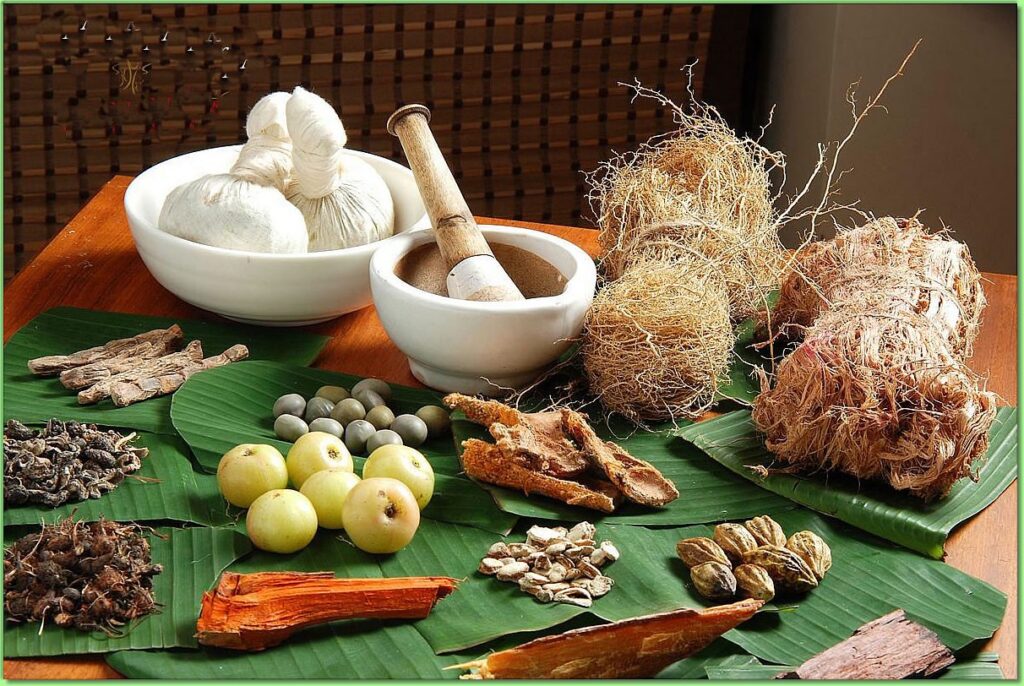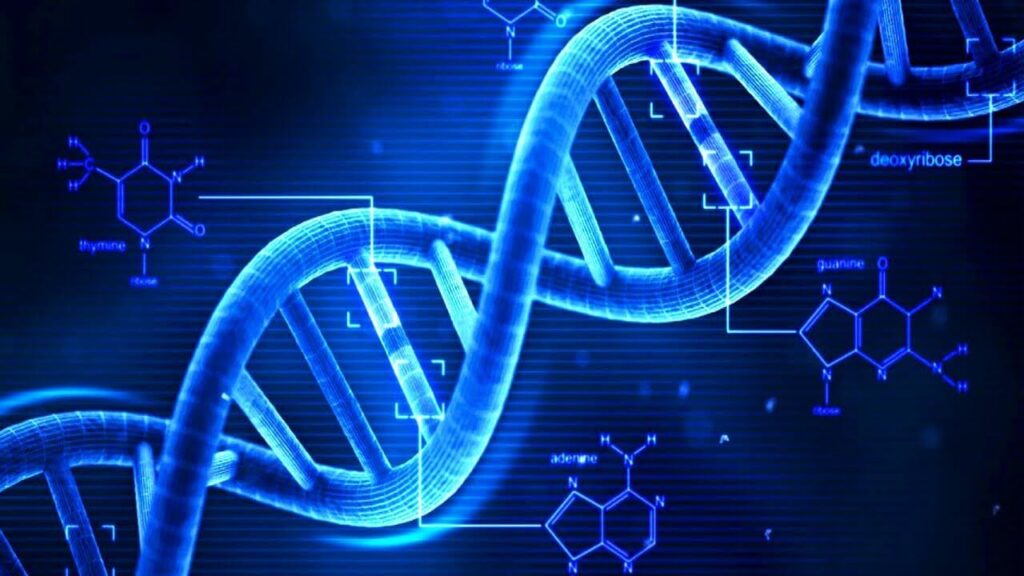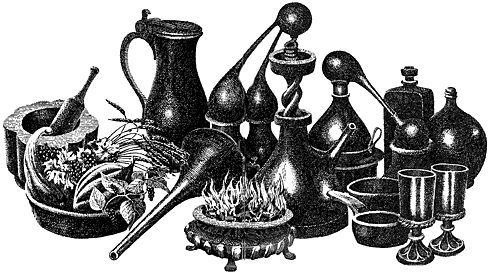Ayurveda – Evidence Based Medicine? Or Folklore?

‘Ayur’ = Life ‘Veda’ = Science
Ayurveda by definition, is the ‘Science of Life’
Ayurveda is not just a ‘medical treatment’…it is a way of life. Written by Sushruta Samhita, in about 3000 BC, Ayurveda is a body of texts that defines the ideal conditions, foods, treatments, practices, etc. that is best suited for the Human Being to be in balance and harmony with nature as present on this Earth. Ayurveda is the original ‘Organic living’.
The basic principle of Ayurveda is ‘balance’. If the body is in balance, and in harmony with the environment, then there is no space for ‘dis’-ease.
Ayurveda, as most other ancient medicinal practices assesses the body as a whole being, with the inclusion of energy meridians, which takes into account the ebbs and flows of bodily fluids, electrical conductance, etc. as opposed to treating each part or system individually as in modern medicine.
Hence, the primary treatment protocol in Ayurveda, is to bring the body back into a harmonious state of being, by balancing out the morphology. More often than anything else, this ‘imbalance’ is created because of an external stimulus, which could be either a disease causing pathogen, or accumulated toxins called as ‘ama’. Most Ayurvedic treatments are focused on eliminating toxins, and by doing so bringing the body back into harmony with itself. Which is a beautiful concept, theoretically, but is it really practically effective, especially in today’s times?
In order for this ‘system’ to work, the body would have to be completely devoid of any intrinsic material that interferes with complete homeostasis. Which includes a lot of detoxification, cleansing, enemas, expulsions and a rigorously restrained diet. Any impurities or imbalances would not allow the treatments to be effective.

So, how effective are Ayurvedic Medicines?
Clinical trials form the main source of evidence-based medicine (EBM) and thereby forming the backbone of clinical practice. Evidence-Based Practice (EBP) has become the treatment of choice and is a combination of research, clinical experience and patient preferences.
“Evidence Based Practice is the conscientious, explicit and judicious use of current best evidence in making decisions about the care of the individual patient. It means integrating individual clinical expertise with the best available external clinical evidence from systematic research.” – (Sackett DL, 1996).
A recent review of 225 original studies published in Indian Ayurveda journals concluded non-satisfactory diagnoses and ‘inconclusive outcomes’ in nearly 90% of the published studies (Bhatt, 2015).
Now Ayurvedic, Siddha and Unnani medicines are exempt from having Evidence based criterion for obtaining a licence from the FDA, which means that even if an Ayurvedic drug is licenced to be sold, it has gone through no clinical trials, examinations, peer-reviewed critique or standardisations in order to be sold over the counter. Herbal medicines are generally safe, so this does not pose such a threat for adverse effects or contraindications, but nonetheless, there is literally no evidence of its efficacy.
The claim of Ayurvedic practitioners and researchers is that the standardised clinical study models, (Of which the double blind randomized control model is the gold standard for testing drug efficacy) is not suited for Ayurvedic treatments, since the methods and protocols are different than that of Allopathic drugs or scientific studies. Hence they claim the studies are inconclusive, due to a lack of parallel in scientific methodology
In a Meta study conducted of over 200 trials of Ayurvedic treatments that included non-randomized interventional trials, single blinded, triple blinded studies and open labelled studies, the results were still non-conclusive (K Sridharan, 2016).
Although, to some extent there is a variability in treatment procedure for Holistic practices, which treats the entire body as a whole, as opposed to Modern Medicine, which aims to ‘treat’ or subdue specific systems, tissues or organelles, as an individual entity. This does make data assessment and research analysis a bit easier to assess.
There are studies with Ayurvedic combination that are conducted with tissue samples and cell lines which do show significant shifts and changes in the intended outcome, but the same treatments with human subjects have been inconclusive (Pilapitiya, 2013).
Although, there might be a need for a revised research methodology that are more specifically structured for holistic treatments and modalities, by which a better examination of traditional medicinal practices as well as new age ‘energy healing’ based modalities can be better examined, and data be analysed to form enough evidence for these practices to be accredited by Medical Boards and be considered as credible treatment procedures and not ‘alternative practices’ , but as of now, there is not enough clinical evidence that shows effectiveness of Ayurvedic treatments and standardised medicines.
Why Do Ayurvedic Medicines not Work?
We all know someone..maybe a friend, family member, or an acquaintance that has been suffering from a chronic ailment, and after no recession from Regular medicine, have given Ayurveda a try. And has not seen a remission. Maybe a temporary alleviation, Maybe. But even so, the condition persists.
I personally have had the same experience with clients, as well as myself. Maybe long term Ayurvedic treatments with the absolute prescribed lifestyle and diet incorporated would help alleviate the symptoms for some time, but as soon as you get back to your ‘regular’ life, eventually the symptoms weigh themselves back in. Sometimes with a more enraged ferocity. I have seen this pattern more-so with rheumatoid arthritis, autoimmune conditions, cardiovascular, and even cancer patients.
Aficionados of Ayurveda generally state that “Your lifestyle is making you sick, if you stick to the Ayurvedic diet and prescriptions, you would be fine”.
Well, from my understanding of ‘disease-free’, I believe that a subject is deemed ‘cured’ only when the disease does not re-occur after the treatment protocol has been ceased. How different is that then, from the ‘symptomatic’ coverage that Pharma offers us then?
I believe that you are healed, if once and for all the disease ends, and you can go back to a normal life, which does not include weekly enemas and a restrictive diet.
Which brings to question of what we define as a ‘Normal Healthy Lifestyle’ in today’s era.
Can we live a life completely free and devoid of stress, preservatives, pollution and ice cream?
We all hope for a Green, Free range, Organic future, but in the present moment, we do have to cope with the perils of our era. And hence there IS a need for medicinal systems and healing protocols that are more practical and ‘user friendly’ for the Human Beings of the 21st Century.
Ayurveda – Behind of it’s times?
The tenets of this Science were written about 5000 years ago. And since then, there have been zero changes, upgrades, reviews or improvisations in either techniques of treatments nor medical formulations. But are we, human beings, and our bodies and biochemistry’s still the same as they were 5000 years ago?
There have, since then been shifts in our climate, environment, and surroundings. We no longer live as close and connected with nature as we did then. We are subject to a lot more ‘in-organic’ substances on the daily than ever before in Human History.
Even our thoughts, emotions, conscious awareness, the way we process information and feelings are vehemently different since previous eras.
Ayurvedic Medicines
All Ayurvedic medications and concoctions can only be deemed ‘Ayurvedic’ by AYUSH (The regulatory agency for Ayurveda). Which means that Ayurvedic medicines HAVE to have the same formulations as written in the original scriptures dating back to 3000 B.C.E. These formulations generally have very low doses and the concentration of the active compounds is too low to create any biochemical shift in our bodies. This could be due to a higher tolerance, lesser susceptibility, lower bio-availability or even the quality of herbs and botanicals used. Since there is no standardization, it is hard to even discern what the cumulative efficacy of the herbal ingredients is supposed to be.

Mechanism of Action:
Ayurveda as a science is structured to create a slow process of rehabilitation, and does not utilize herbs or constituents that create a rapid physiological shift, as compared to Chinese and South American herbs. Since the process is slow, and it’s not practical for a lot of people to remain on the limiting diet and lifestyle for such long durations, there probably are hindrances in the effective remission of the disease. Also, since our bodies are so used to pharmaceutical drugs, and even more new age supplements, food additives, etc., it can be surmised that our bodies sensitivities to low dose plant extracts are probably lowered, thereby not successfully activating intended cellular responses.
Human Evolution:

Studies with High resolution sequencing on the Human Genome suggest that there has been a vast array of mutations and genetic variants over the past 5000 years. Indeed, the Human Genome has been quite busy these past few millennia. A Study published in Nature, in 2012 has successfully pinpointed not only the locations of these variants but also been able to map the timelines of when these mutations have occurred. Of the 1.15 million single-nucleotide variants found among more than 15,000 protein-encoding genes, 73% in arose the past 5,000 years, the researchers report (Fu, 2012).
A lot of these variants could be responsible for new diseases or newer gene pathways of existing maladies, which means that there are newer diseases and disease causalities which are probably unknown to Ayurveda. These variants could also be responsible for shifts in our biochemical pathways or receptor-recognition systems, making us resistant or resilient to older techniques and molecular interactions.
Techniques of Preparation:

Ayurvedic formulations involve the science of alchemy, and are not just based on blaise herbal combinations. The Vedic scriptures mention very specific techniques of preparations. For example, “Blend the concoction in an iron vessel, and stir 100 times with an aluminium stirrer of specific length and dimensions”. Metals such as Lead, Silver, Gold, Tin, Mercury, and Copper are important catalysts in transmutation of chemicals and even botanical compounds. The metallic ions sometimes chelate into the blend of herbs and concoctions. There are several factors that these metals and other specific methodologies play in the chemical pathways of Ayurvedic formulations. When followed incorrectly, they could even have detrimental effects, as insigniated by the recent outrage on the detection of excessive lead and mercury in several Ayurvedic medicines. Unfortunately, not too many Ayurvedic manufacturers follow these specified techniques to a Tee; and in my own opinion, following some of these complex and specific methodologies could be impractical and maybe even damn near impossible in large scale processing plants. Larger, more mass produced Ayurvedic and herbal manufacturers probably just blend the ingredients in, without Sushruta’s original instructions, which could be a probable cause to the ineffectiveness of the final product.
Conclusion:
Ayurveda is an ancient science that defines the basic practices for optimal human health. Its Principles are based on our natural essence and synergetic existence with nature. Adhering to the tenets of Ayurveda can be a succinct guideline for living a healthy and hearty life. It can be an effective system to follow for preventative care, and also for detoxification, rehabilitation, cleansing and maybe even rejuvenation.
Ayurvedic treatment requires effort, dedication and gets results if followed vehemently, but these techniques and lifestyle changes may be impractical for some. Treatment with only Ayurvedic medications may be ineffective due to its outdated science and techniques of pharmacological evaluation.
Upgradation of formulations, active dosages and definitely more clinical studies could help perfect this wonderful body of medicinal practice.
Ayurveda is a beautiful system, and if administered correctly can and has been life changing for a lot of people, and it definitely is an excellent ‘way of life’ to follow to maintain your body’s health and wellbeing.
References:
Bhatt N., Nimkar S. Clinical research in Ayurveda: a preliminary review of 225 papers published in Indian Ayurveda journals. IOSR J Dent Med Sci. 2015;14:43–50.
Sackett D.L., Rosenberg W.M.C., Gray J.A.M., Haynes R.B., Richardson W.S. Evidence based medicine: what is it and what it isn’t. BMJ. 1996;312:71
Pilapitiya S., Siribaddana S. Issues in clinical trials in complementary and alternative medicine. Curr Opin Pharmacol. 2013;13:311–312
Kannan Sridharana, Gowri Sivaramakrishnan, Clinical trials in Ayurveda: Analysis of clinical trial registry of India. Journal of Ayurveda and Integrative Medicine 2016 Jul-Sep; 7(3): 141–143.
Mandip Goyal, Clinical trials in Ayurveda: Issues, challenges and approaches. Ayu. 2017 Jan-Jun; 38(1-2): 1–2
Fu, W. et al. Nature Advance online publication, http://dx.doi.org/10.1038/nature11690
Nidhi Subbaraman. Past 5,000 years prolific for changes to human genome. Nature News Nov 2012.
Corinne N. Simonti and John A. Capra. The Evolution of the Human Genome. Curr Opin Genet Dev. 2015 Dec; 35: 9–15.